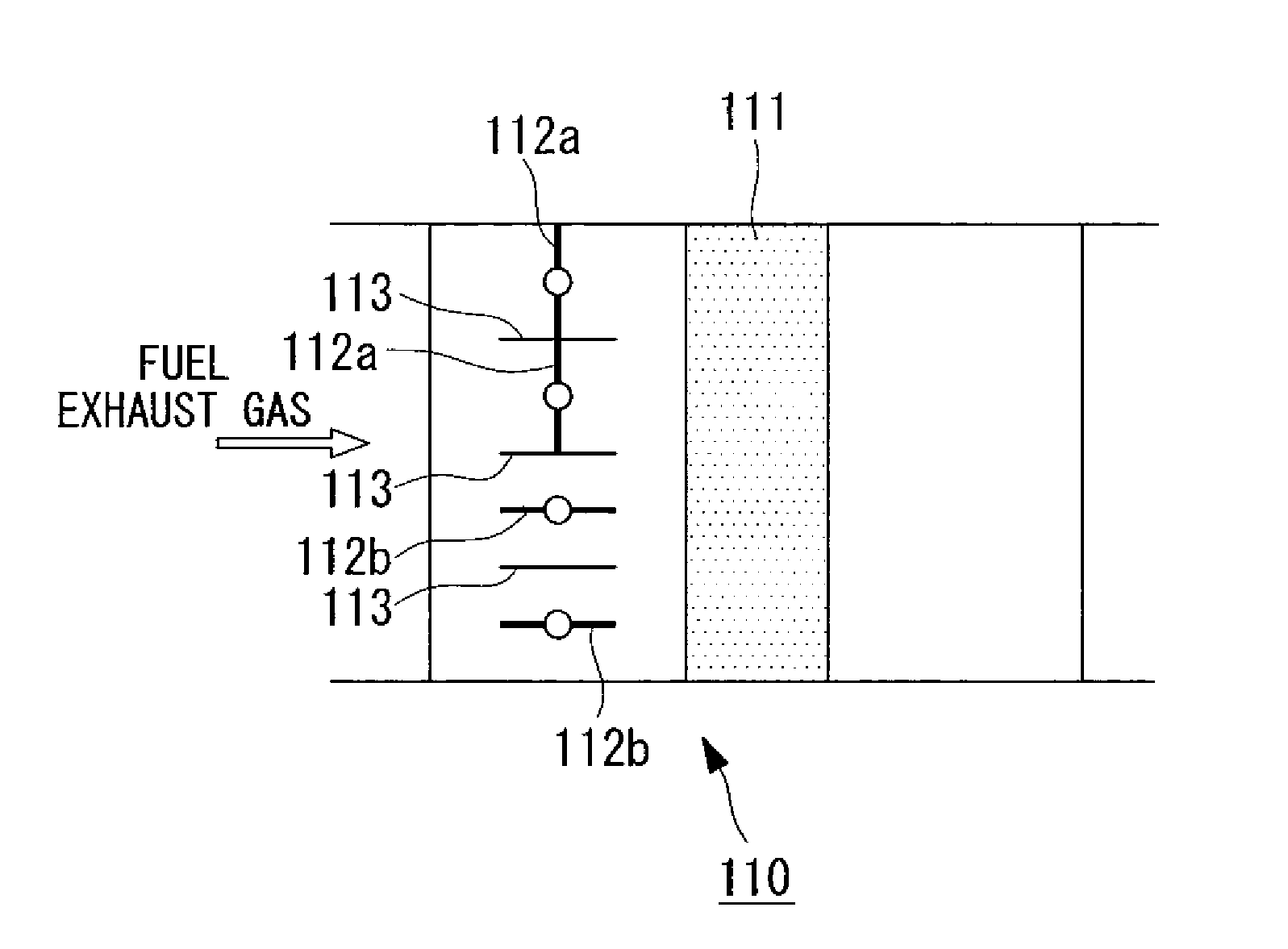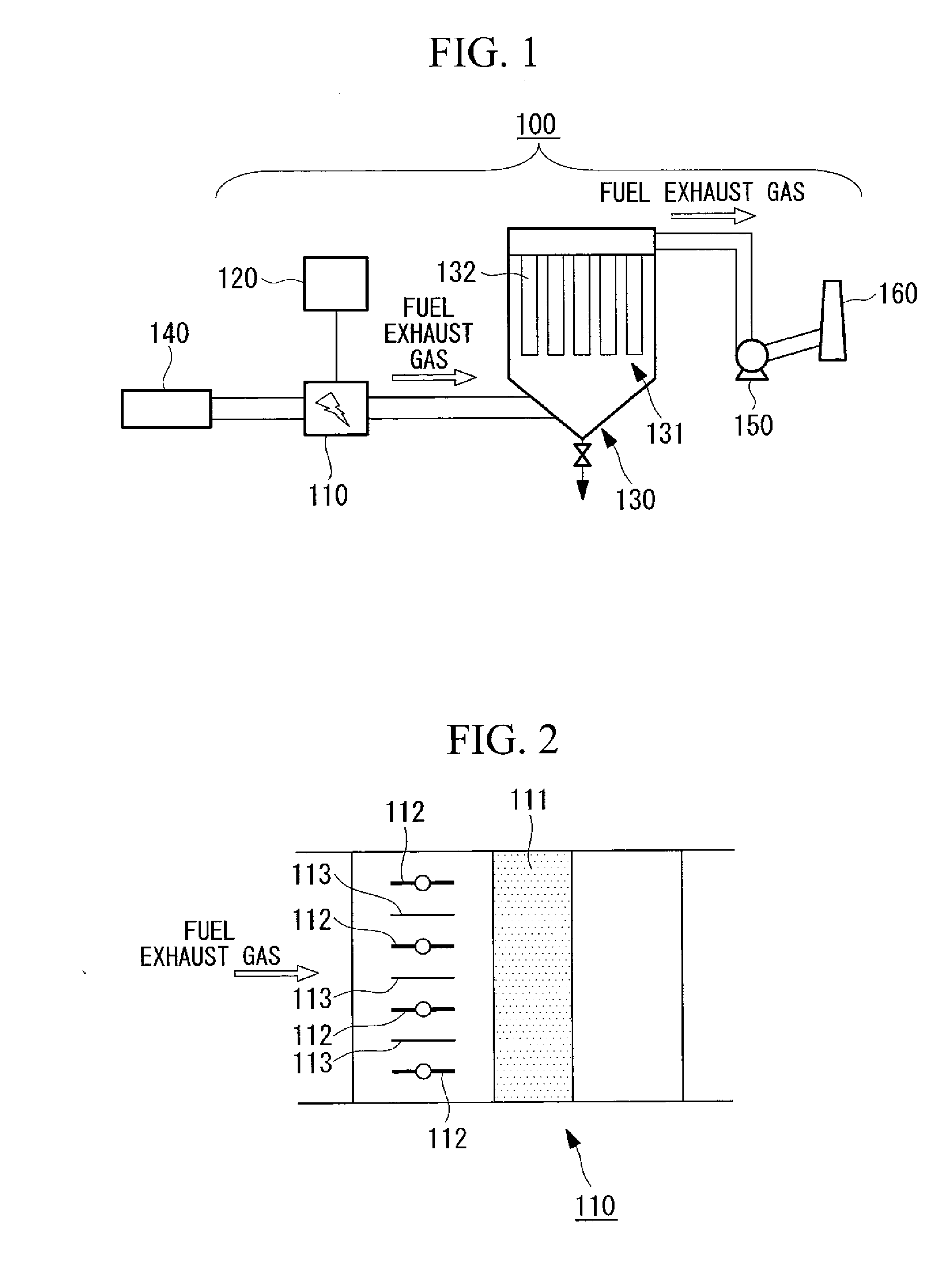Method for operation of dust collection device, and dust collection device
- Summary
- Abstract
- Description
- Claims
- Application Information
AI Technical Summary
Benefits of technology
Problems solved by technology
Method used
Image
Examples
first embodiment
[0051]FIG. 1 is a schematic view of a dust collection device according to this embodiment. A dust collection device 100 is installed in a flue gas duct positioned downstream from a boiler (combustion furnace) 140, and comprises a pre-charging unit 110 and a bag filter 130, with the pre-charging unit 110 positioned upstream from the bag filter 130. An induced draft fan 150 and a chimney 160 are disposed in a flue gas duct downstream from the bag filter 130.
[0052]FIG. 2 is a schematic view of the pre-charging unit of the dust collection device. The pre-charging unit 110 comprises an electrode section 111 thereinside. The pre-charging unit 110 also comprises a gas flow rate control device that adjusts the flow rate of the gas flowing through the pre-charging unit 110 to a prescribed value. In this embodiment, the gas flow rate control device comprises a gas flow path modification unit 112, which is provided at at least one of the gas inlet side and the gas outlet side of the pre-chargi...
second embodiment
[0078]Next is a description of a second embodiment.
[0079]If discharge is continued during the electrode cleaning operation described above, then because the dust is charged, removal of the dust from the electrode surfaces becomes difficult. Accordingly, in this embodiment, either prior to the commencement of electrode cleaning (namely, closing of the dampers) or during the electrode cleaning, the control unit 120 may stop the current supply from the power source to the discharge electrodes, or to the internal electrodes and the surface electrodes, thereby stopping the discharge. In this case, during the period while the cleaning is performed, the dust passing through the pre-charging unit 110 does not undergo charging and cohesion, but rather flows into the dust chamber 131 of the subsequent bag filter 130 in a state that still includes very fine dust. Because dust that has previously undergone charging and cohesion is already trapped on the filter cloth 132, the uncharged dust is t...
third embodiment
[0085]In this embodiment, the difference in pressure loss achieved by performing charging control in the pre-charging unit is described. This embodiment is applied to both a dust collection device that employs the step of removing dust by increasing the gas flow rate, as described in the first and second embodiments, and a dust collection device that does not employ the dust removal step. With the exception that the mechanism for increasing the flow rate is optional, the structures of the devices are the same as those described above.
[0086]First is a description of the differences between no charging, continuous charging, and on-off charging control.
[0087]FIG. 11 is a comparative diagram which compares, for a device that employs the electrode configuration illustrated in FIG. 3 and uses the pre-charging unit to charge the dust, the case (c) in which the voltage is varied by using on-off charging control, and the cases (a and b) in which no charging or continuous charging respectivel...
PUM
| Property | Measurement | Unit |
|---|---|---|
| Speed | aaaaa | aaaaa |
| Flow rate | aaaaa | aaaaa |
| Electrical resistance | aaaaa | aaaaa |
Abstract
Description
Claims
Application Information
 Login to View More
Login to View More - R&D
- Intellectual Property
- Life Sciences
- Materials
- Tech Scout
- Unparalleled Data Quality
- Higher Quality Content
- 60% Fewer Hallucinations
Browse by: Latest US Patents, China's latest patents, Technical Efficacy Thesaurus, Application Domain, Technology Topic, Popular Technical Reports.
© 2025 PatSnap. All rights reserved.Legal|Privacy policy|Modern Slavery Act Transparency Statement|Sitemap|About US| Contact US: help@patsnap.com



